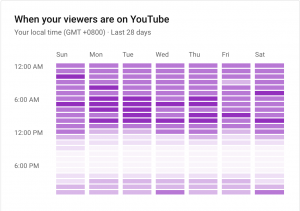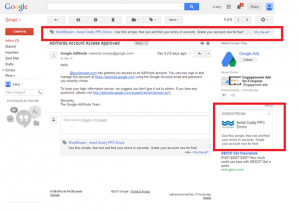— March 22, 2018
Discounts are a valuable tool in your ecommerce toolbox when used correctly. Many retail professionals speak of the negative effects of discounts—reducing the value of your business, decreasing overall revenue, etc.—but these are only true if you don’t do it right. In which case, discounts have the power to:
- Increase revenue
- Reduce cart abandonment
- Create happiness
Yet not all coupons are effective or successful. To make them most effective you need to take a number of steps before and after, including setting goals and tracking success. So, before you create your next discount, keep the following in mind. You can make them an effective business tool if you do it right.
Not All Discounts Are Created Equal
First and foremost, it’s important to remember that not all discounts will help you achieve the same goal. Some are better for driving new customers while others are ideal for getting rid of surplus stock. For example, a 2017 retailer survey found the following:
- 9 percent of retailers said Sitewide, All Products is best for maximizing sales
- 5 percent of retailers said Minimum Order Value is best for increasing cart average
- 2 percent of retailers said New Customers Only is best for increasing long-term revenue
- 5 percent of retailers said Buy One Get One (BOGO) is best for reducing unwanted inventory
To make the most of your discounts, align them with business goals. Ideally, you’ll do that at the start of each quarter, or however often you reassess high-level priorities. Planning ahead like this allows you to be most effective and also gives you time to plan a marketing strategy that drives sales.
Don’t Expect People to Stumble Upon Your New Discount
It may sound obvious, but it’s easy to create a discount, post about it once on social media or your website and then wait and see what happens. A single post, however, is likely not enough to drive interest. Instead, you need to take a multi-pronged approach to reach your entire audience, including new customers who may not follow you on social media or be on your subscriber list.
When marketing your discount, consider all options:
Social media: Both organic and paid posts. If it’s a “semi-annual sale,” for example, it may be worth boosting a post or running a paid campaign. In this case, take the costs of marketing into account when determining the success of the discount. Did you drive enough revenue to barely break even or did you come out making a profit?
Email marketing: Don’t forget to share with your email list at least once, if not more. Create a campaign for big discounts and sales, especially if they’re related to a holiday or new season. Hyping your discounts, consistently engaging with customers, and sending reminders as it comes to an end is an important tactic for being as effective as possible.
Promote on your website: You’ll notice that most large brands have banners and pop-up ads for current discounts; this allows you to capture the attention of any organic traffic that your site gets.

Setting Goals and Tracking is Critical
Before releasing a discount, get all the necessary information to ensure you’re making the best decision for the business. For example, if your Q1 goal is to boost revenue by 10 percent, you may want to create a Minimum Order Value coupon, which was found to be the most effective for increasing cart average. You can even take your goals one step further to denote how much of that revenue you want to come from the discount. With this detailed information, you’ll be able to track whether it was successful or not.
Tracking these results is just as critical as the reporting your business does on profit or traffic to the website. Without this information you don’t know what’s working and what’s not. Luckily, most ecommerce platforms have easy-to-use tracking features that make it reporting a quick and simple process.
In many cases, you can simply export reports and send them to stakeholders. The key is tracking the right data. Using the same example as above, you’d need to check overall revenue, along with total revenue from the discount, to determine whether it hit the mark or not.
If it didn’t, dig deeper into your data to determine why. Was the discount not enticing? Did you promote it well enough? To determine the former, look into traffic data as well, which can tell you what marketing avenues drove the most traffic, along with which traffic stream had the highest conversion rate.
To make your discounts even easier to track, associate each one with a promo code. “The real [value when] using promo codes is that they create a direct link between a particular marketing campaign and customer conversion. Rather than just measuring inbound traffic from an ad, then, promo codes track people who are actually engaging with your company,” says Drew Hendricks, Inc. contributor.
Too Much of a Good Thing Is Bad for Business
New businesses can easily fall into the trap of creating too many discounts as a way of driving new customers, which may not actually be helpful. “Discounts are part of business—align them with your marketing and advertising goals, but don’t offer them too frequently and definitely don’t establish a predictable pattern,” says Jonathan Long, VIP Entrepreneur contributor. Why?
- You run the risk of devaluing your product. If it’s worth the cost, let customers pay that.
- Customers get used to paying less and come to expect it.
- Your discounts become less appealing.
- Customers wait to purchase until they get a new discount.
That doesn’t mean you shouldn’t use them. While all of these potential downfalls hurt your brand and your revenue, which is why Long suggests that strategy and alignment is critical for making discounts effective.
When assessing business priorities, and aligning them with goals and discounts, plan the total number of discounts you’ll offer within a specific time period, along with when they’ll be available and for how long. With a roadmap for the month, quarter or year, you avoid getting into a reactive habit of creating discounts just to drive revenue or new customers at the last minute.
Make Your Discount Effective
While there discount naysayers make an important point—discounts can reduce profit and condition customers to expect a deal—that’s not the whole story. When done correctly, with proper planning, goal alignment and tracking, they can actually be a valuable business tool for boosting revenue and driving new customers. Keep these ideas in mind as you create discounts throughout the year. You may find what was one unsuccessful is suddenly working very well.
Digital & Social Articles on Business 2 Community
(91)
Report Post





